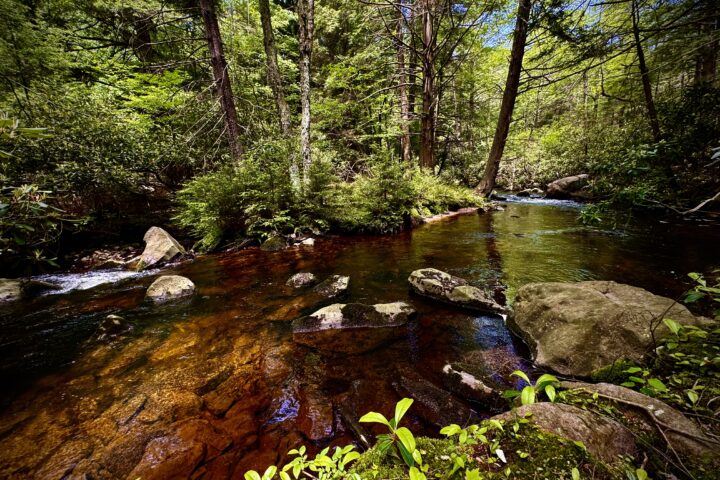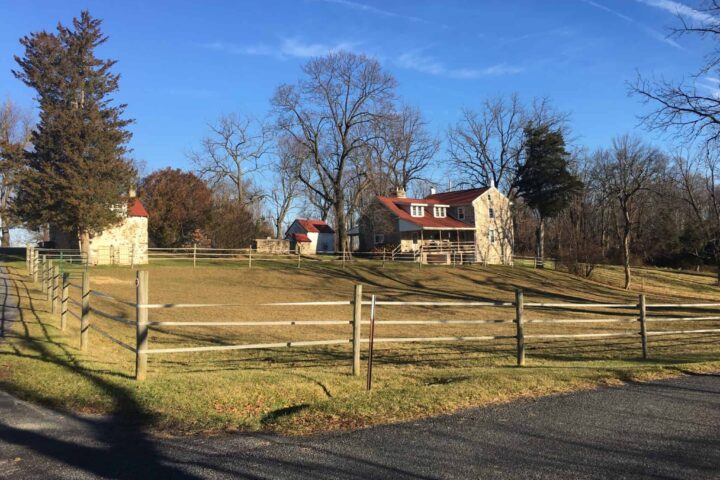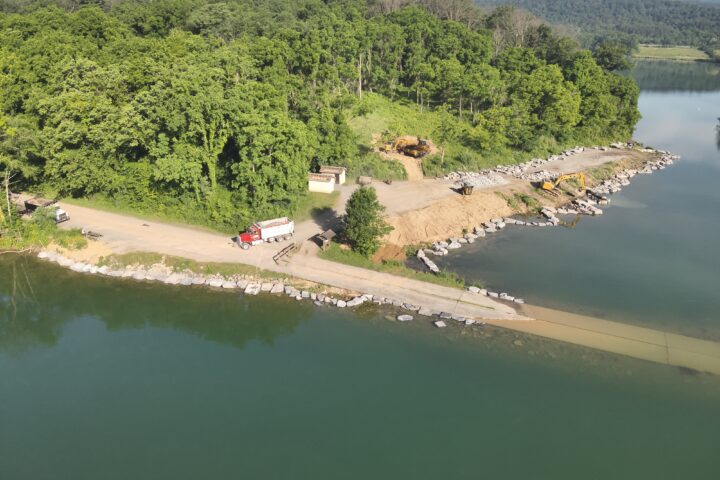by Tricia Andriski, US Fish & Wildlife Service
In the forested hills of the Pennsylvania Highlands, undeveloped land is becoming more expensive and harder to find. For Pennsylvania state agencies tasked with conserving outdoor spaces for public recreation and wildlife protection, finding creative ways to acquire new lands is a priority.
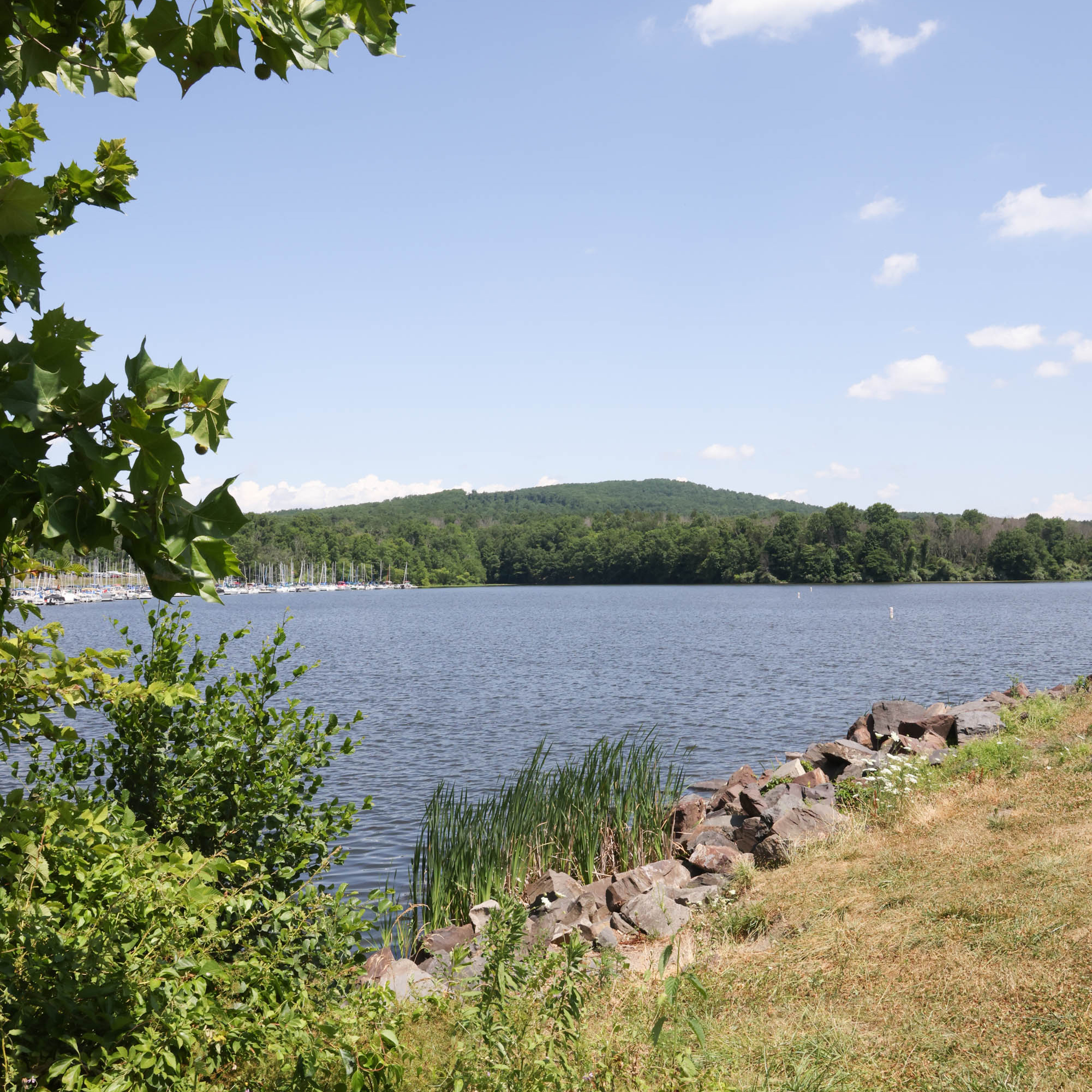
A view across the water from Nockamixon State Park shows the top of Haycock Mountain, an area that was conserved with the assistance of Highlands Conservation Act grant funds. Photo by Tricia Andriski, US FWS.
“As more people move to rural areas, the diminishing amount of open space creates an even greater need for places for people to recreate and to protect lands for wildlife habitat,” said James Wassell, park manager at French Creek State Park. He explained that French Creek was not large enough to accommodate the number of people who wanted to visit during the pandemic.
Increasingly, state parks are finding success using the Highlands Conservation Act grant program, managed by the U.S. Fish and Wildlife Service, which supports states, non-governmental organizations, and other conservation partners working to sustain key landscapes in the Highlands region. Recently, with the assistance of Highlands funds, the Pennsylvania Bureau of State Parks acquired several parcels that will provide habitat for wildlife, protect drinking water resources, and offer public recreation.
Wassell said the goal of the state park program is to continue to expand the areas of protected land to ensure habitat for wildlife exists in the future. Land that protects threatened species, such as bog turtles and endangered birds, is of great interest to the park.
Challenges arise as state parks seek to secure land that connects directly to existing parks. “For state parks to manage land effectively, the land must be contiguous, so that new parcels connect to existing parcels,” said Wassell.
With the help of Highlands funds, the parks are continuing to expand.
Over at a sister agency, Steve Wacker, district manager for the William Penn State Forest, explained that the Highlands program has also enabled them to expand their area of conserved land.
“In recent years with the Highlands funding, we’ve been able to almost triple the land holdings that we have and we’re able to provide a very unique resource for the public. We’re able to offer a multiple-use situation where we’re demonstrating good forest management; we allow hunting; and we allow free camping for people. The Highlands program has really been able to expand that for this part of Pennsylvania where we didn’t really have much,” said Wacker.
Drew Gilchrist, regional adviser for Pennsylvania’s Bureau of Recreation and Conservation, explains that conserving land with the assistance of Highlands funds helps mitigate many pressures facing state and local agencies.
“We have incredible people pressures in areas looking for recreation on these lands,” he said.
Gilchrist noted that the 50% funding-match provided by the Highlands grant is allowing Pennsylvania agencies such as the Department of Conservation and Natural Resources and the Pennsylvania Game Commission to continue to add to existing land parcels.
“These are exactly the kind of lands that we want to see. They’re near populations; they’re providing environmental services; they’re providing water recharge; and they’re providing recreation,” he said. “The more land we can acquire, it’s going to help with climate resilience, recreation, and environmental services.”
As populations continue to grow, Pennsylvania conservation agencies are expanding the footprint of each park as well. The funding available through the Highlands Conservation Act grant program is helping state agencies meet their land-acquisition goals and enabling park guests to continue enjoying the parks time and time again.
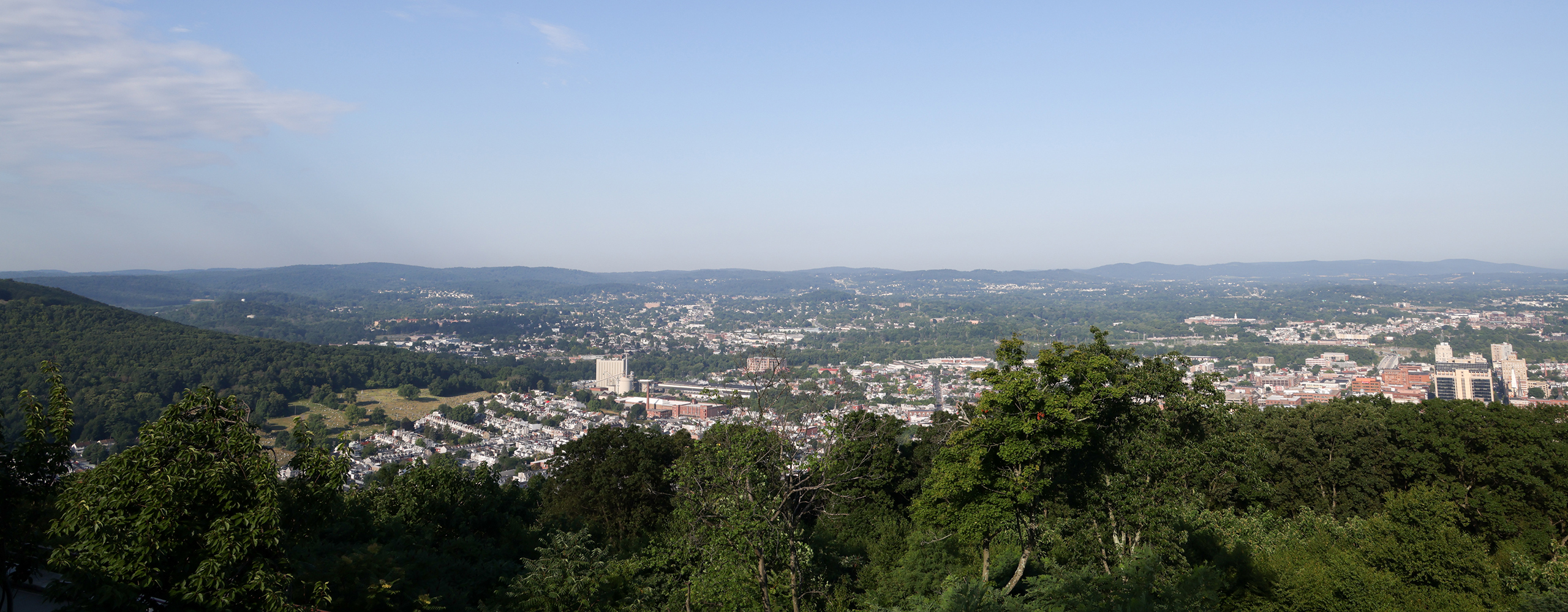
A morning view of Reading, PA, displays the ridgelines of the Highlands Region along the horizon. Photo by Tricia Andriski, US FWS.


